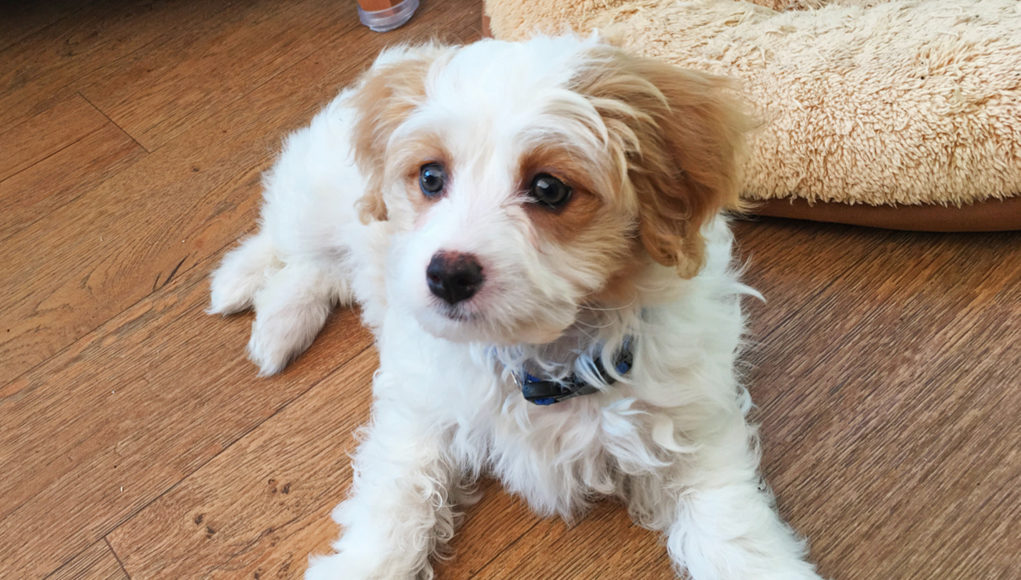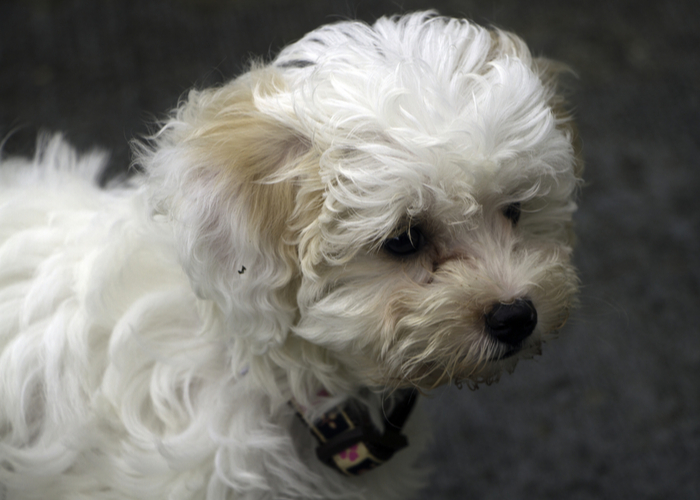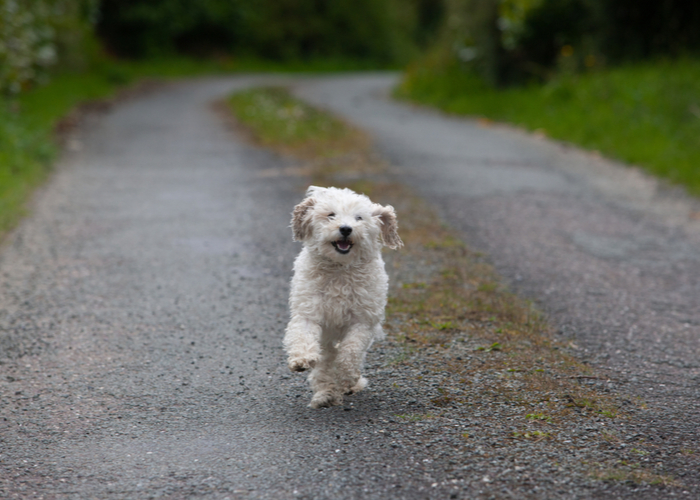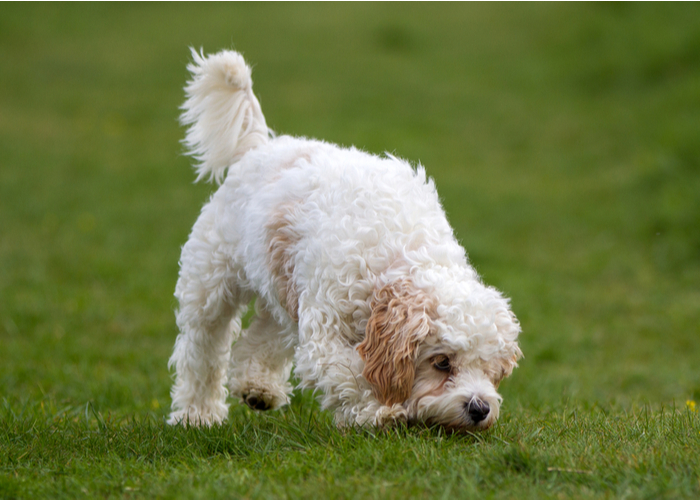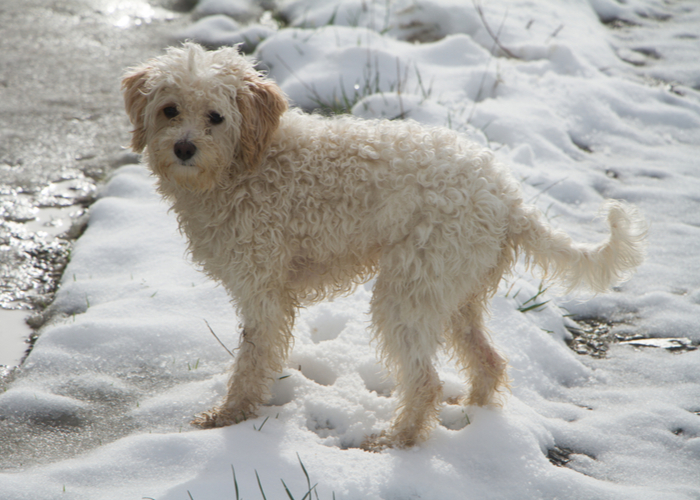Table of Contents
The Cavachon is a relatively new but increasingly popular hybrid pup that combines the characteristics and traits of two popular dogs into a beautiful dog with a big personality.
The Cavachon is a crossbred pup between a Bichon Frise and a Cavalier King Charles Spaniel. This spunky dog is energetic, has a beautiful silky coat, and has a friendly personality.
This dog breed is small, athletic, attentive, and nearly hypoallergenic.
A Cavachon is the perfect combination of an adorable snuggle companion and an active, playful dog. The Cavachon is exceptionally intelligent and works well for every family dynamic, including young families.
This breed is extremely loyal, always trying to please its owners. While this breed typically has less pet dander than other breeds, the pup will still require regular grooming to maintain its fluffy fur.
Cavachon Dog Breed History
Breeders began mixing the bichon fries and Cavalier King Charles spaniel reasonably recently (in the 1990s).
The Cavachon possesses many characteristics people look for in a family or companion dog, including intelligence, gentleness, friendliness, and smaller size.
Additionally, the dog is favored for the low exercise requirements and minimal shedding. As the demand for the hybrid spiked, so did the Cavachon's breeding.
It's essential to understand the prevalence of puppy mills when considering a hybrid breed. As certain breeds quickly rise in popularity, so does the sharp increase in puppy mills.
Puppy mill schemes are often inhumane for dogs, without regard for health or well-being. To watch out for puppy mills, here are a few red flags to consider:
- The website offers approximate wait times to secure a new puppy
- Multiple mixed breeds are available through the same breeder
- The breeder is willing to ship puppies
- Locating the breeder's contact information is incredibly difficult
- You aren't able to meet both parents on site
The Cavachon Appearance
A full-grown dog stands between 12-13 inches tall at the shoulder and roughly weighs 15-20 pounds.
Due to the differing parent breeds, the Cavachon's fur will vary significantly. This pup will always remain on the smaller side thanks to the Bichon Frise and Cavalier King Charles Spaniel parents.
Most Cavachon pups will hold a combination of brown, black, and white fur with deep brown eyes. The coats are often silky (as opposed to wiry) and are medium in length.
The Cavachon will have varying levels of wave or curl. These dogs shed very little but often require frequent grooming activity due to the coat growing out over time.
It's essential to remember that all dogs will produce some level of dander and shedding, but the Cavachon coat is a low-allergen pet for most allergy sufferers.
It's essential for anyone considering a Cavachon puppy to spend some time with the mixed breed to ensure your allergies can tolerate the dog dander and shedding.
Temperament
This breed is loyal, affectionate, and playful but tends to bark at strangers. These dogs enjoy meeting new people and making friends with loveable temperaments.
The Cavachon is active, particularly as puppies, but wants a snuggle on the couch. Training is often effortless with this breed, with most dogs taking simple commands and tricks quickly.
The Cavachon puppy can become exceptionally nervous around new environments or people without proper socialization.
It's essential to introduce and develop highly positive experiences for Cavachon puppies properly.
Home Requirements for Cavachon Puppies
These dogs adapt to generally any environment, from a large home to a small apartment. The Cavachon isn't particular about their space, making them highly adaptable overall.
These dogs don't require ample outdoor space for activity, enjoying time outdoors just as much as they enjoy sleeping on the couch.
The Cavachon does require a lot of attention from their owners, as they enjoy the company of others. This breed isn't one to do well if left solo for extended periods, as they don't like being alone.
A Cavachon is a beautiful family dog, adapting well to young children. Most pups will eagerly join children in playing or snuggling throughout the day.
Most dogs will become tolerant of noise, business, and commotion, but young children should never pick the puppy up.
A Cavachon is exceptionally social and often does well with other dogs, cats, or pets within the home. These pups are highly adaptable to all environments, making them exceptional companions for almost any home.
Provided these dogs receive their fair share of attention, a Cavachon will happily coexist with others in the home. It's vital to properly introduce the dog at a young age with thorough training.
RELATED: Ready to Adopt a Pet? Ten Best Family Dogs
The Care Required for a Cavachon
The Cavachon is a rather high-maintenance breed, partly thanks to its coat. The routine grooming appointments must include regular bathing and trimming of the coat as it continuously grows over time.
Most pet parents should schedule grooming appointments every two to three months to keep up on the coat, especially during warmer summer.
Between appointments, these dogs will need the hair around their eyes regularly trimmed. The hair needs to remain short to prevent any buildup, which can irritate the eyes and vision of the dog.
Owners will need to periodically need to clean beneath the eyes with a warm washcloth or tear-stain wipes.
These dogs are typically very playful and active, so don't be alarmed if they are up for more activity throughout the day.
Thankfully, the Cavachon holds a relatively low exercise requirement, with a half-hour walk often exceeding enough to burn extra energy.
This dog also requires regular walks and playtime.
Training Methods for the Cavachon
The best training technique for this breed is positive reinforcement training. Starting behavior training early on is essential, offering plenty of positive experiences overall.
A small breed will require additional upkeep when it comes to their feet, ears, and teeth. As such, you'll want to spend a lot of time desensitizing your dog to these activities.
Play with their feet, fur, nails, and paws early on. Grab their ears and look inside to get them used to cleaning.
If you're going to brush their teeth, start when they're young and build a daily routine. Not only do these activities keep your dog healthy, but they also offer early detection of any ongoing health issues.
Cavachon Overall Health
The Cavachon is a small dog breed prone to collapsing tracheas, eye problems, medial patella luxation, dental disease, and sebaceous adenomas.
Typically, these dogs will live between 10-12 years old.
As a mixture of two purebred dogs, the Cavachon does have the potential to develop a few different health conditions commonly found in their parent breeds.
All small dogs are prone to dental disease as there are naturally more spaces for debris to accumulate and bacteria to build.
The easiest way to prevent dental disease is with daily brushing and annual dental cleanings with your veterinary office.
Small dogs are often known for eye issues too. Dry eye (also known as keratoconjunctivitis), eye ulcers, and cherry eye are the most common.
Understanding Dry Eye
Dry eye occurs due to decreased ability to produce tears within the duct.
Tears are essential for the lubrication, comfort, and overall health of the dog's eyes. Most often, vets will prescribe ophthalmic cyclosporine to stimulate tear production.
If your dog suddenly develops red, inflamed, painful, or irritated eyes, it's always wise to talk to your veterinarian.
Corneal Ulcers in Dogs
A corneal ulcer is an abrasion or wound on the corneal surface, which can either be severe or minor.
Although most are found with trauma, these conditions can develop for the Cavachon. Treatment for this condition varies greatly, depending on the severity.
For minor ulcers, healing naturally occurs in 3-10 days. More profound injuries may require surgery to repair the trauma.
All ulcers will require medical attention, especially when preventing bacterial infection in the eye.
Cherry Eye in Cavachons
The cherry eye is a prolapsed gland within the eye, often occurring when a tear gland in the dog's third eyelid becomes inflamed.
Although this condition isn't particularly painful, most dogs will rub the eye as if it were itchy. Many situations will require minor surgery to reposition the gland back to its standard location.
If you notice a cherry eye with your pup, always book an appointment with your veterinarian. Early care can ensure your dog's long-term eye health.
Slipping Kneecaps
This condition is exceptionally common with small dogs, where the kneecap moves out of its normal position.
Occasionally, the luxating patella is treated with physical therapy and medication. However, the slipping kneecap may need surgery to reposition the joint and reduce pain.
Once realigned, the dog returns to normal as if nothing ever happened.
The Cavalier King Charles spaniels are incredibly prone to degenerative mitral valve disease, meaning there's a chance your pup could develop symptoms.
This type of heart disease is often characterized by a murmur, detectable by your veterinarian.
Degenerative Mitral Valve Disease
A characteristic left-sided systolic murmur results in mitral regurgitation (MR). This common canine cardiac disease will impact approximately 30% of dogs over age 10.
This condition is most commonly found in small breeds and can increase depending on the dog's predisposition and genetic profile.
Unfortunately, no proven interventions are currently available to slow the progression of DMVD.
If your Cavachon pup is diagnosed with DMVD, it's imperative to closely monitor the dog, which could prevent the development of severe and life-threatening heart failure.
Many dogs can develop allergies, making them itchy or frequent ear and skin infections. A Cavachon is specifically prone to obesity and subsequent joint issues like arthritis.
It's essential to check the relative weight of your dog compared to the height and frame.
Arthritis in Cavachons
Unfortunately, age tends to influence the progression of arthritis, along with the genetic profiles of the pup.
Diagnosing arthritis in dogs during the early stages is exceptionally difficult, as many symptoms fail to appear until the affected joint is seriously damaged.
Dogs are also rather stoic, hiding their pain until it's pretty severe. Keep an eye out for lethargy, stiffness or lameness in the legs, weight gain, or difficulty playing like usual.
While these symptoms may occur with a minor injury, ongoing problems may signify a more serious issue.
A veterinarian can help diagnose arthritis after palpating your dog's joints.
They may also recommend X-rays of the joint, ruling out other conditions that cause similar symptoms. Treatment will depend on the degree of damage to the joint.
Treatment for arthritis is rather difficult, as most cases become progressive over time. As it stands, there is no known cure for the condition.
Should your dog develop this condition, controlling pain and decreasing inflammation is the easiest method.
Preventing the development of arthritis through diet and exercise is the best way to keep a dog's joints healthy.
RELATED: Recipe: Homemade Dog Food for Arthritis
Other Health Conditions Your Cavachon May Have
Often, small breeds are prone to medial patella luxation or slipping kneecaps. Additionally, the Cavachon can develop small, hairless, irregular growths called sebaceous adenomas.
Always alert your veterinarian of any lumps or bumps you've found for further evaluation.
Finally, small dogs can suffer from a collapsing trachea. This condition causes the dog's windpipe to collapse, leading to coughing and irritation.
Wearing a harness instead of a collar can reduce this probability.
Cavachon Dog Breed Conclusion
Being the perfect hybrid of playful and cuddly, the Cavachon is winning the hearts of millions every single day.
If you're looking for a friendly, energetic dog that adapts to virtually any environment, the Cavachon may be the best dog for your family.
These pups get along with everyone they meet, making them sociable and friendly dogs that always love your attention.
Their coat makes them a low-shedding option, suitable for some individuals with allergies to pet dander, although it's always a good idea to spend time with the puppy before bringing one home.
As small breed dogs, these dogs don't require a lot of space within the home, nor do they need a large yard to play. Although the breed is relatively new, it's growing in popularity.


